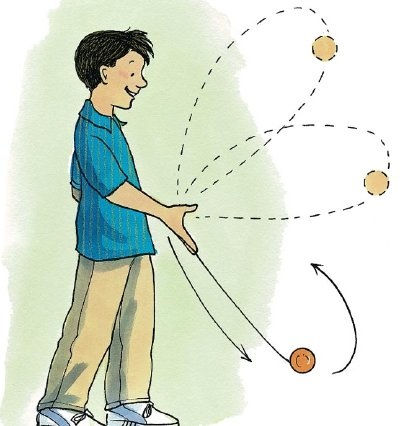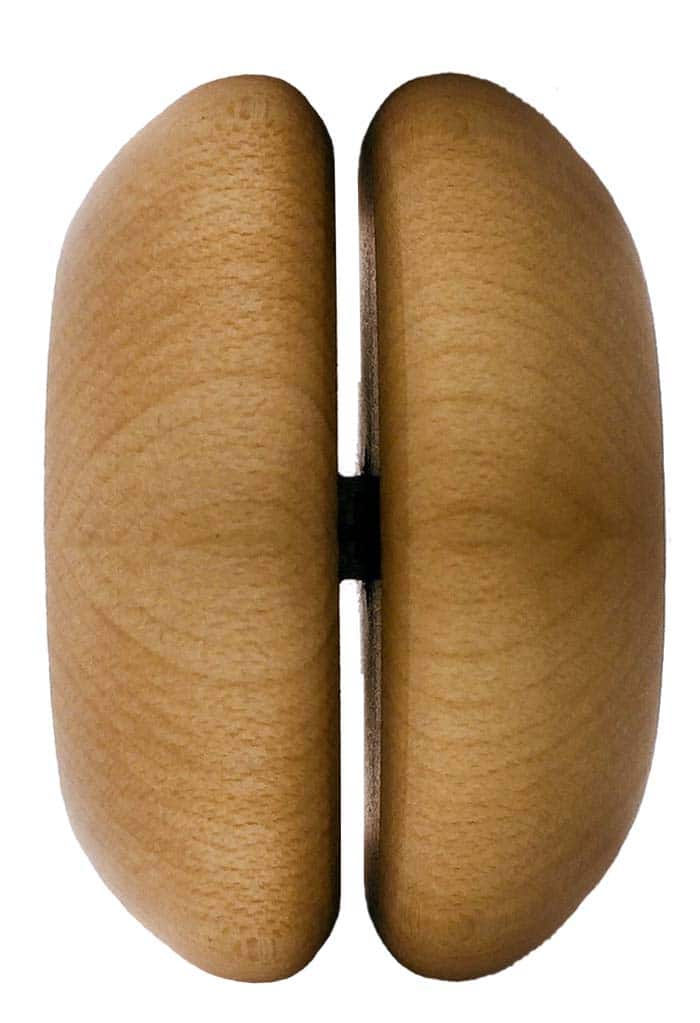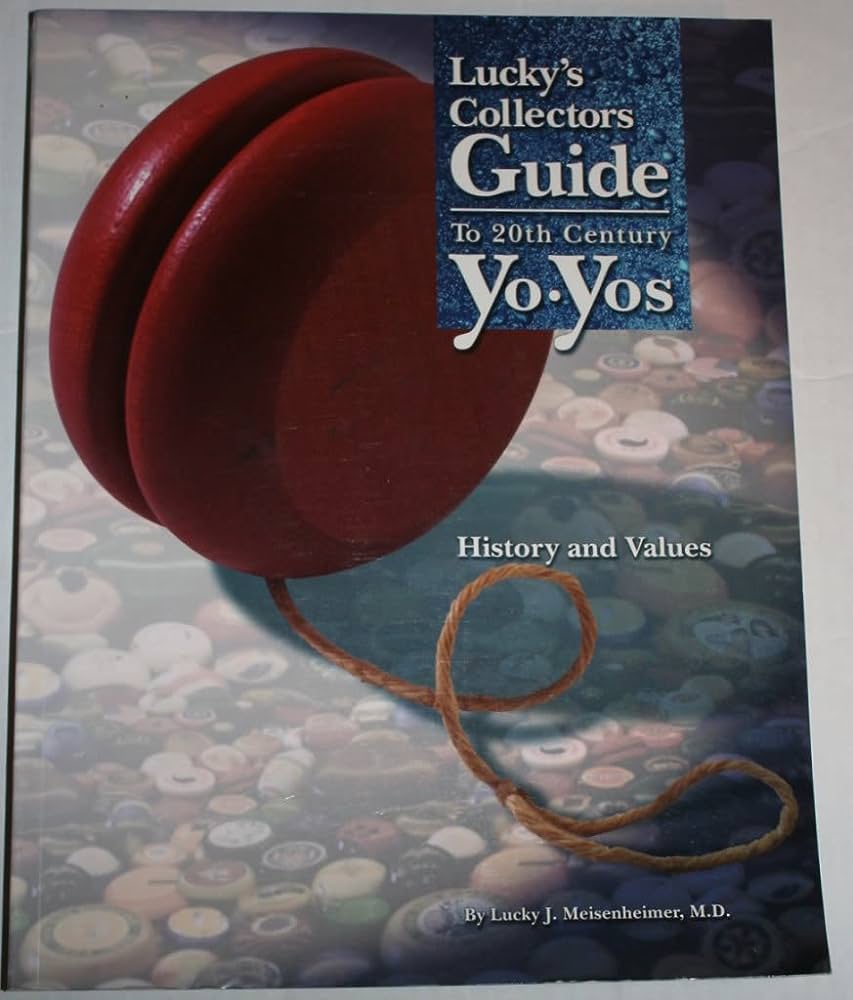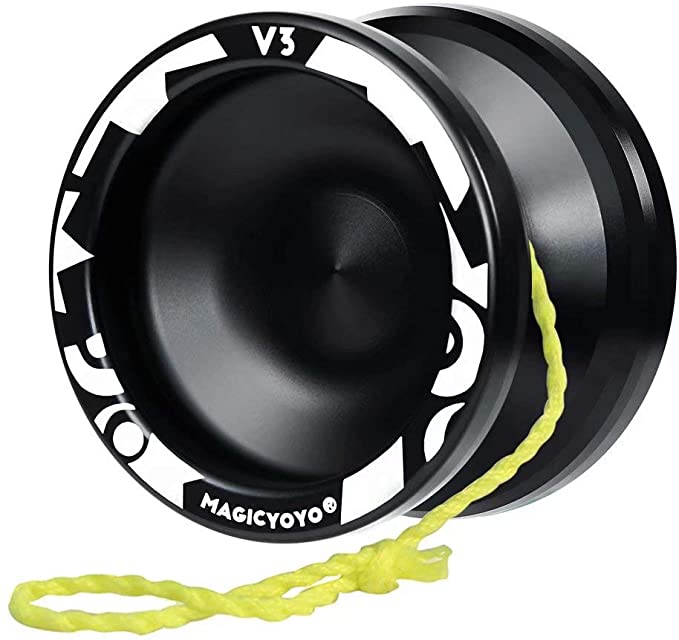Wooden vs. Metallic Yoyos: Which is Right for You?

Understanding the Different Materials: Exploring the Pros and Cons
When it comes to yoyos, the material used plays a crucial role in determining its performance and overall feel. Wooden yoyos have a unique charm that appeals to many enthusiasts. They are often handcrafted and offer a nostalgic touch reminiscent of traditional toys. Wooden yoyos tend to be lightweight, making them great for beginners who are learning basic tricks. However, they may not spin as long or perform advanced tricks as well as their metallic counterparts.
On the other hand, metallic yoyos have their own appeal that sets them apart from wooden ones. Made from materials such as aluminum or titanium, these yoyos are known for their durability and stability during spins. Metallic yoyos can handle more complex tricks with ease due to their weight distribution and precision engineering. Additionally, some players prefer the sleek and modern look of metallic yoyos.
When comparing the pros and cons of wooden versus metallic yoyos, there is no clear winner as it ultimately depends on personal preference and skill level. Some players enjoy the natural feel and lightness of wooden yoyos while others prefer the solid construction and performance capabilities of metallic ones. It’s important to consider factors such as playability, comfort, customization options, budget constraints, and individual preferences when choosing between these two materials for your ideal yoyo experience.
Exploring the Unique Charm of Wooden Yoyos
Wooden yoyos have a certain allure that sets them apart from their metallic counterparts. The natural feel and warmth of wood create a unique charm that many yoyo enthusiasts find irresistible. When you hold a wooden yoyo in your hand, you can’t help but appreciate the craftsmanship and organic beauty of the material.
One of the main advantages of wooden yoyos is their lightness. The weight distribution in wooden yoyos tends to be more evenly spread, allowing for smoother spins and better control during tricks. This makes them ideal for beginners who are just starting to explore the world of yoyoing. Additionally, the lighter weight reduces strain on your wrists and allows for longer play sessions without fatigue.
Another aspect that adds to the appeal of wooden yoyos is their natural grip. Wood has a slightly rough texture that provides excellent traction, making it easier to catch and perform intricate string maneuvers. This enhanced grip gives players an added sense of confidence when attempting complex tricks or high-speed routines.
In summary, wooden yoyos possess a unique charm that cannot be replicated by any other material. Their lightweight nature, combined with their natural grip, make them perfect for both beginners and experienced players alike. Whether you’re drawn to their organic beauty or fascinated by their smooth spins, there’s no denying the special allure of wooden yoyos in the world of skill toys.
The Appeal of Metallic Yoyos: What Sets Them Apart
Metallic yoyos have a distinct appeal that sets them apart from their wooden counterparts. One of the key factors is their sleek and shiny appearance. The metallic finish gives these yoyos a modern and futuristic look, which can be quite eye-catching. Whether it’s a polished chrome or anodized aluminum design, metallic yoyos definitely stand out in terms of aesthetics.
Another aspect that sets metallic yoyos apart is their weight distribution. These yoyos are often designed with precision to distribute the weight evenly throughout the body, allowing for better stability during tricks and spins. This balanced weight distribution enhances control and makes it easier to perform intricate maneuvers without losing momentum.
Additionally, metallic yoyos generally offer longer spin times compared to wooden ones. The materials used in constructing these yoyos, such as stainless steel or titanium, contribute to their increased durability and ability to maintain rotational energy for extended periods. This means more time for players to showcase their skills and explore complex string formations without worrying about the yo-yo losing momentum prematurely.
In summary, the appeal of metallic yoyos lies in their sleek appearance, balanced weight distribution, and longer spin times. These qualities make them highly desirable among yo-yo enthusiasts who seek both style and performance in their play experience. So if you’re looking for a yo-yo that stands out visually while also delivering impressive tricks on demand, consider giving a metallic yo-yo a try!
Comparing Performance: Which Yoyo Material Offers Better Spins?
When it comes to comparing the performance of wooden and metallic yoyos, one important factor to consider is the spinning ability. Wooden yoyos are known for their smooth spins, thanks to their lightweight nature. This allows them to spin longer and with less friction, resulting in impressive tricks and stunts. On the other hand, metallic yoyos tend to have a heavier weight which can affect their spinning capabilities. While they may not spin as long as wooden yoyos, they make up for it with their stability and precision during play.
Another aspect that affects the spinning performance of yoyos is the material’s impact on string tension. Wooden yoyos have a tendency to absorb moisture from humidity or sweat, causing slight changes in string tension over time. This can result in slightly shorter spins compared to metallic yoyos which do not absorb moisture as easily. However, some players actually prefer this characteristic of wooden yoyos as it adds an element of unpredictability and challenge to their tricks.
It’s important to note that both wooden and metallic yoyo materials offer unique advantages when it comes to spins. Ultimately, the choice between these two materials depends on personal preference and playing style rather than one being definitively better than the other. Whether you prioritize longer spins or stable control during play will determine which material suits your needs best
Durability Matters: Assessing Longevity and Wear in Wooden and Metallic Yoyos
Wooden yoyos are known for their natural beauty and charm, but when it comes to durability, they may not hold up as well as their metallic counterparts. The wooden material is more prone to wear and tear over time, especially with frequent use. This can result in scratches, dents, and even cracks in the wood. However, some wooden yoyos are made from high-quality hardwoods that offer better resistance to damage.
On the other hand, metallic yoyos tend to be much more durable due to their sturdy construction. They are typically made from materials like aluminum or stainless steel which can withstand rough play without showing significant signs of wear. Metallic yoyos also have a higher tolerance for impact and can handle tricks that involve hitting hard surfaces or performing intricate string maneuvers.
When considering longevity and wear in wooden versus metallic yoyos, it’s important to note that both types of materials have their strengths and weaknesses. While wooden yoyos may require more care and maintenance to keep them in good condition over time, they offer a unique aesthetic appeal that many enthusiasts appreciate. Metallic yoyos provide greater durability but may lack the organic feel that wooden ones possess.
In conclusion (oops!), assessing the longevity and wear of wooden versus metallic yoyos requires weighing factors such as personal preference for aesthetics versus durability needs. Whether you choose a beautifully crafted wooden yoyo or an ultra-durable metallic one ultimately depends on your playing style, budget considerations, and overall preferences as a yo-yo enthusiast!
The Weight Factor: How Material Influences Yoyo Playability
When it comes to yoyo playability, the weight of the material plays a crucial role. Wooden yoyos tend to be lighter in weight compared to metallic ones. This lightness allows for faster and more nimble movements, making wooden yoyos ideal for intricate tricks that require quick maneuvering. The lighter weight also makes them easier to control and balance on the string, giving players a greater sense of precision.
On the other hand, metallic yoyos are generally heavier in weight. This added heft provides stability during spins and allows for longer sleep times. The increased momentum generated by the extra weight gives metallic yoyos a powerful spin that can sustain tricks requiring sustained rotations or regenerations. Additionally, the added mass can create a satisfying feel in hand as it generates more force when thrown.
The choice between wood and metal ultimately depends on personal preference and playing style. Those who prefer speed and agility may lean towards wooden yoyos due to their lightweight nature, while those who prioritize stability and power may opt for metallic ones instead. Experimenting with both materials is recommended to find what suits your individual playstyle best without compromising your enjoyment of this classic toy!
Comfort and Grip: Evaluating the Feel of Wooden and Metallic Yoyos
When it comes to evaluating the feel of wooden and metallic yoyos, comfort and grip are two important factors to consider. Wooden yoyos have a warm and natural feel in your hand, thanks to their smooth texture and organic material. The wood provides a comfortable grip that allows for precise control during play. Whether you’re performing tricks or simply enjoying some casual yoyoing, the cozy feel of a wooden yoyo adds an extra level of enjoyment to the experience.
On the other hand, metallic yoyos offer a different kind of grip that some players may find more appealing. The cool touch of metal against your skin can create a unique sensation while holding the yoyo. Additionally, many metallic yoyos feature textured finishes or grooves on their surface, which provide excellent grip even during fast-paced play. This enhanced grip can be especially beneficial for advanced players who require maximum precision and stability.
Ultimately, choosing between wooden and metallic yoyos based on comfort and grip is subjective and depends on personal preference. Some individuals prefer the warmth and naturalness of wood in their hands, while others enjoy the sleekness and firmness provided by metal. It’s essential to try out both types before making a decision so you can determine which feels most comfortable for you personally.
In conclusion (just kidding!), considering how each material feels in your hand is crucial when selecting a yoyo that suits your preferences best. Comfort plays an integral role in enjoying extended periods of play without discomfort or fatigue setting in. Likewise, having optimal grip ensures better control over movements during tricks or routines. So take some time to explore both wooden and metallic options to see which one offers the perfect balance between comfortability and gripping ability for your individual needs!
Customization Options: Which Material Allows for More Personalization?
When it comes to customization options, both wooden and metallic yoyos offer unique opportunities for personalization. Wooden yoyos can be easily carved or engraved with intricate designs, allowing players to showcase their creativity and individuality. From simple patterns to elaborate artwork, the natural grain of the wood adds a rustic charm that cannot be replicated by other materials.
On the other hand, metallic yoyos provide a different avenue for customization. These yoyos can be anodized in various colors, giving them a sleek and vibrant appearance. Additionally, some manufacturers offer customizable engravings on the outer rims of metallic yoyos. This allows players to have their names or special messages etched onto their favorite throw, adding a personal touch that sets it apart from others.
Whether you prefer the warmth and organic feel of wood or the modern aesthetics of metal, both materials provide ample options for customization. Ultimately, the choice between wooden and metallic yoyos will depend on your personal preferences and desired level of uniqueness in your playstyle. So go ahead and let your imagination run wild as you explore all the possibilities these materials have to offer!
Budget Considerations: Determining the Cost-Effectiveness of Wooden and Metallic Yoyos
When it comes to budget considerations, there are a few factors to keep in mind when deciding between wooden and metallic yoyos. First and foremost, the cost of these two materials can vary significantly. Wooden yoyos tend to be more affordable compared to their metallic counterparts. This is because wood is generally less expensive and easier to source than metals such as aluminum or titanium.
However, it’s important not only to consider the initial cost but also the long-term investment. While wooden yoyos may be cheaper upfront, they may require more frequent replacements due to wear and tear. Metallic yoyos, on the other hand, are known for their durability and longevity. They can withstand intense play sessions without showing signs of damage or degradation.
In addition to considering the cost-effectiveness in terms of lifespan, personalization options should also be taken into account. Metallic yoyos often offer more opportunities for customization with various finishes and engravings available. However, these additional features usually come at a higher price tag compared to basic wooden designs that have limited customization options available.
Finding Your Perfect Match: Factors to Consider When Choosing Between Wooden and Metallic Yoyos.
When deciding between wooden and metallic yoyos, there are several factors to consider. Firstly, think about your skill level and the type of tricks you want to perform. Wooden yoyos tend to be better for beginners due to their lighter weight and slower spin times. They are also more forgiving when it comes to string tension, making them easier to control. On the other hand, metallic yoyos are typically preferred by advanced players who require faster spins and longer sleep times for complex tricks.
Another aspect to think about is durability. Wooden yoyos can be prone to chipping or cracking if they hit a hard surface repeatedly. Metallic yoyos, on the other hand, are generally more robust and can withstand rough play without sustaining significant damage.
Comfort is another important factor in choosing between wooden and metallic yoyos. Wooden yoyos often have a smoother feel in the hand due to their natural material composition, while metallic ones may have a slightly cooler touch but provide a solid grip thanks to their textured surface.
Considering these factors will help you make an informed decision when selecting your ideal match between wooden and metallic yoyos. Keep in mind that personal preferences vary from person to person, so it’s essential to try out different types before settling on one that suits your style of play best!
What are the main factors to consider when choosing between wooden and metallic yoyos?
When choosing between wooden and metallic yoyos, it’s important to consider factors such as material, performance, durability, weight, comfort, customization options, and budget.
What are the pros and cons of wooden yoyos?
Wooden yoyos have a unique charm and are often considered more aesthetically pleasing. They also tend to be lighter, which can make them easier to control. However, they may not spin as long as metallic yoyos and can be more prone to wear and tear.
What makes metallic yoyos appealing?
Metallic yoyos offer a sleek and modern look. They often have better spin times and are more durable than wooden yoyos. Additionally, the weight distribution in metallic yoyos allows for more advanced tricks.
Which yoyo material offers better spins?
Metallic yoyos generally offer better spin times compared to wooden yoyos. The weight distribution and design of metallic yoyos contribute to their longer spins.
How do wooden and metallic yoyos differ in terms of durability and wear?
Metallic yoyos are typically more durable and resistant to wear compared to wooden yoyos. Wooden yoyos may show signs of wear and tear over time, while metallic yoyos can withstand more intense play.
How does the weight of the yoyo affect its playability?
The weight of the yoyo can significantly impact playability. Wooden yoyos are generally lighter, making them easier to control and maneuver. Metallic yoyos, on the other hand, may be heavier, allowing for more stability and longer spins.
Which material offers a better grip and overall comfort?
Grip and comfort can vary depending on personal preference. Wooden yoyos often provide a more natural and comfortable feel, while metallic yoyos may have a sleeker grip due to their surface texture.
Can I customize my yoyo based on the material?
Both wooden and metallic yoyos offer customization options. However, wooden yoyos are typically easier to customize through painting or engraving, allowing for more personalization.
Are wooden or metallic yoyos more cost-effective?
In general, wooden yoyos tend to be more budget-friendly compared to metallic yoyos. However, there are varying price ranges within both categories, so it ultimately depends on the specific yoyo model and brand.
How can I find the perfect match between wooden and metallic yoyos?
To find your perfect match, consider your preferences in terms of aesthetics, performance, durability, weight, comfort, customization options, and budget. Experimenting with different yoyo materials and seeking recommendations from experienced yoyo players can also help you make an informed decision.





